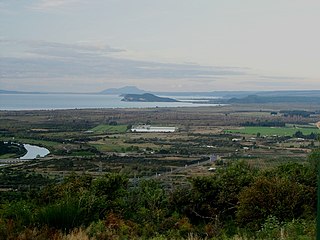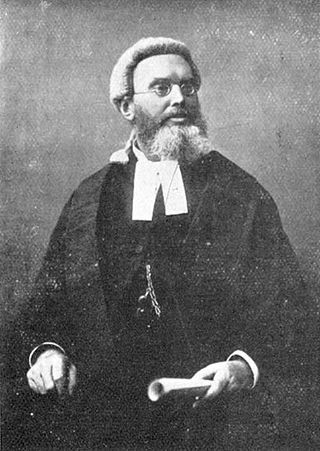| |||||
| Decades: | |||||
|---|---|---|---|---|---|
| See also: | |||||
The following lists events that happened during 1846 in New Zealand.
| |||||
| Decades: | |||||
|---|---|---|---|---|---|
| See also: | |||||
The following lists events that happened during 1846 in New Zealand.
The estimated population of New Zealand at the end of 1846 is 71,050 Māori and 13,274 non-Māori. [1]
Te Heuheu may refer to several people from the Te Heuheu family which has provided chiefs of the Māori Ngati Tuwharetoa iwi (tribe) for approximately 200 years. The name is also used for several landmarks in the central North Island of New Zealand:

Ngāti Tūwharetoa is an iwi descended from Ngātoro-i-rangi, the priest who navigated the Arawa canoe to New Zealand. The Tūwharetoa region extends from Te Awa o te Atua at Matatā across the central plateau of the North Island to the lands around Mount Tongariro and Lake Taupō.

Horonuku Te Heuheu Tukino IV (1821–1888), also known as Patātai, was paramount chief of Ngāti Tūwharetoa, a Māori tribe of the central North Island of New Zealand. His birth name was Patātai; he assumed the name Horonuku – meaning landslide – after the death of his parents in a landslide in 1846. He was placed under house arrest by the Crown and forced to gift the mountains of Ruapehu, Tongariro and Ngauruhoe in 1887 for the creation of Tongariro National Park.

Sir James Prendergast was the third Chief Justice of New Zealand. Prendergast was the first Chief Justice to be appointed on the advice of a responsible New Zealand government, but is chiefly noted for his far-reaching decision in Wi Parata v The Bishop of Wellington in which he described the Treaty of Waitangi as "a simple nullity"
The following lists events that happened during 1864 in New Zealand.
The following lists events that happened during 1863 in New Zealand.
The following lists events that happened during 1862 in New Zealand.
The following lists events that happened during 1861 in New Zealand.
The following lists events that happened during 1860 in New Zealand.
The following lists events that happened during 1849 in New Zealand.
The following lists events that happened during 1848 in New Zealand.
The following lists events that happened during 1844 in New Zealand.
The following lists events that happened during 1842 in New Zealand.
Lawrence Marshall Grace was a 19th-century Member of Parliament from the Bay of Plenty region of New Zealand.

Sir Hepi Hoani Te Heuheu Tūkino VII was the seventh elected chief of the Ngāti Tūwharetoa iwi, a Māori tribe of the central North Island, and an influential figure among Māori people throughout New Zealand.
Hoani Te Heuheu Tūkino VI (1897–1944) was a notable New Zealand tribal leader and trust board chairman. Of Māori descent, he identified with the Ngāti Tūwharetoa iwi. He was born in Waihi, New Zealand in 1897, the younger son of Tūreiti Te Heuheu Tūkino V.

Mananui Te Heuheu Tūkino II was a New Zealand Māori tribal leader of the Ngāti Tūwharetoa iwi.
Herea or Hereara, later known as Te Rangi-māheuheu and Te Heuheu Tūkino I, was a Māori rangatira of the Ngāti Tūrū-makina, Ngāti Parekāwa, and Ngāti Te Koherā hapū and paramount chief of the Ngāti Tūwharetoa iwi of the region around Lake Taupō, New Zealand, in the late eighteenth and early nineteenth century.

Sir Tumu Te Heuheu Tūkino VIII is a New Zealand Māori tribal leader. He is the eighth elected paramount chief of the Ngāti Tūwharetoa iwi in the central North Island, and an influential figure among Māori people throughout New Zealand.

Te Tauri was an early 19th-century Māori rangatira (chieftain) of the Ngāti Te Rangiita hapū of Ngāti Tūwharetoa from the region around Lake Taupō, New Zealand. He is remembered as a prominent leader and powerful warrior.
![]() Media related to 1846 in New Zealand at Wikimedia Commons
Media related to 1846 in New Zealand at Wikimedia Commons